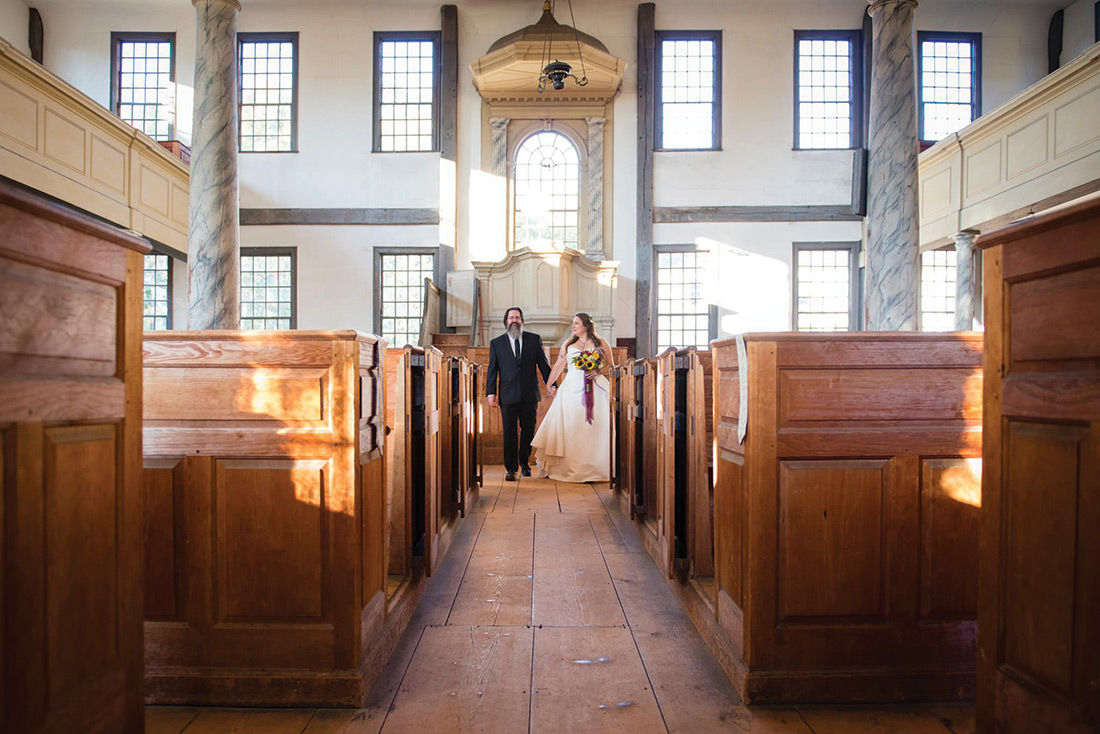For decades, I have attended events, meetings, and tours at Historic New England (HNE) properties. Through my work with HNE as both a radio interviewer and as a member of the executive board of directors of the North of Boston Convention and Visitors Bureau, I noticed that while I was fascinated by the antiquities within the homes, I became equally intrigued by the palpable spirit of the properties and developed a curiosity for the history behind the stories you could feel there.
The energy of the people who lived, worked, and played on these grounds for centuries before me was deeply felt in the paddocks and stone walls of the Spencer-Peirce-Little Farm in Newbury. I dreamed of clinking glasses and partaking in riveting conversations with interior designer Henry Davis Sleeper and frequent visitor Isabella Stewart Gardner at Beauport, The Sleeper-McCann House on Gloucester Harbor. I became fascinated by the level of unrest in the family battle and bitter divorce within the Phillips House that would facilitate dismantling and moving a section of the home to another town.
A big part of why I became so keenly aware of this plethora of juicy tales was through a transition I witnessed in the site managers, caretakers, docents, and stewards of these properties. A group of dynamic, young women have come on board with a passion for honoring the history of the homes with whose care they were entrusted, coupled with a drive to make them interesting, accessible, and yes, fun!
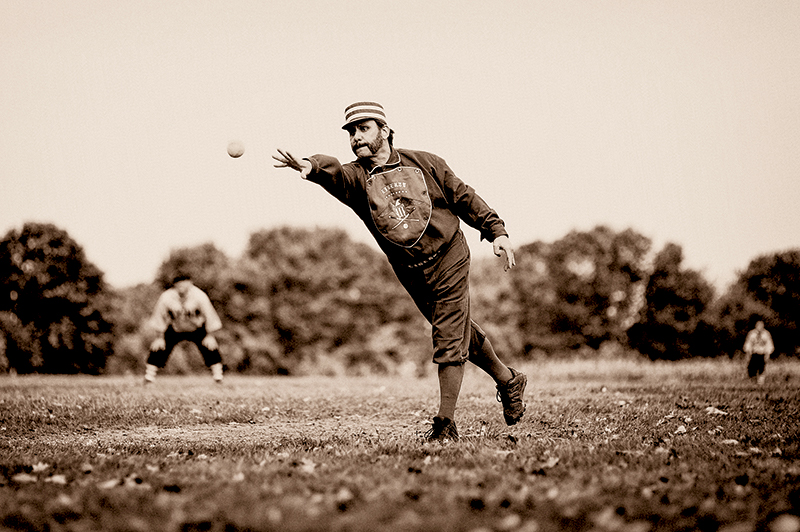
No one is more familiar with these hidden stories than Bethany Dorau, regional site manager at HNE. Fresh out of graduate school, Dorau got a job as lead guide at the Spencer-Peirce-Little Farm, also giving tours of the Coffin House. Dorau found out, only after working for HNE, that she was related to the families from five of the properties she oversees. A spunky, bright, curious women’s history major, Dorau was more interested in looking to the future than the past, only to run right into it.
She relates her story: "My mother's family dates back to 1635 in Newbury, but I grew up in British Columbia. We returned to Newbury in the 1980's when I was twelve. The Coffin House, one of the historic sites that I love most, was inhabited by the Coffin Family, my ancestors, from 1678 until 1929. A genealogist estimated that there are between three and five million people who are descended from the first Tristram Coffin and his wife, Dionis Stevens Coffin. Their son, also named Tristram, built the Coffin House and had 10 children with his wife, Judith Greenleaf Somerby Coffin, who had three children already from her previous marriage. Many of the visitors to the Coffin House are relatives, and one day, on a whim, I decided to look up Tristram and Judith in my own genealogy. Imagine my surprise when I discovered that they are my seventh great-grandparents.”
Dorau’s personal stories with her properties did not end there. “I met my husband at Spencer-Peirce-Little Farm at a vintage baseball game,” she says. “Every year, teams play in the back field using 1860s rules. James, the operations manager for Ipswich Ale, brought beer in their signature tap trucks. We became friends and eventually fell in love during these games. We were married in another HNE museum—the Rocky Hill Meeting House in Amesbury.” It is no surprise a favorite event for the couple is “Tales and Ales,” which takes place at HNE’s Swett-Ilsley House in Newbury, a nod to the then Swett’s Tavern of the late 1600s.
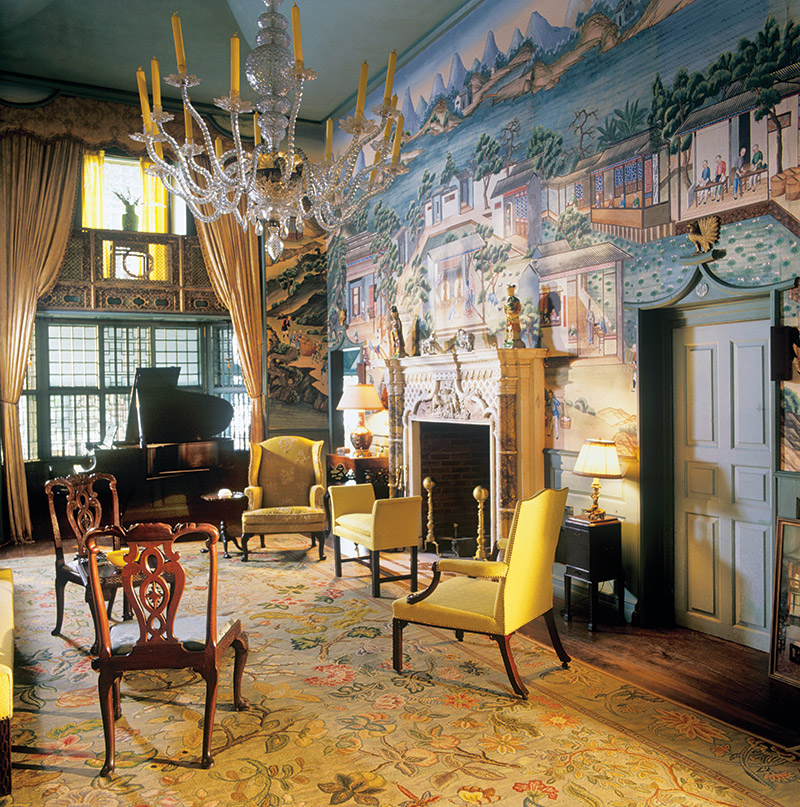
The HNE property that boasts both the most colorful designs and stories is undoubtedly Beauport, the Sleeper-McCann House. The exquisitely appointed waterfront mansion is home to a lifetime collection of curiosities, colored glass, folk art, china, and more. Martha Van Koevering, site manager, says, “Isabella Stewart Gardner was a frequent visitor to Eastern Point where she had many friends, including interior designer Henry Sleeper, who built Beauport. During the 1918 influenza pandemic, Gardner did what many people are doing now—in June and July 1918 she took respite in the waterfront home of a friend, Caroline Sinkler, who was away in Philadelphia, but whose home, Wrong Roof, was next door to Beauport. That same autumn, Henry Sleeper went to Paris, where he worked as the director of the American Field Service Headquarters in France, a WWI volunteer ambulance service founded by another Eastern Point neighbor, A. Piatt Andrew. Sleeper battled influenza himself, as noted in these letters to Gardner: ‘My influenza, which happened a month ago, has left me with a wretched cough and feeling very below par. Don’t worry about me! I am really all right—just that devilish bronchial thing which the grippe left me. I did think I was going to have pneumonia. For a while I felt pretty sick, and had a nasty cough, but I escaped that, and having had my lesson, I am as foxy as possible when the dampness tries to catch me.’”
Van Koevering went on to say, “It is heartening to remember that the bulk of Sleeper’s design career and all of the fabulous waterfront rooms at Beauport came after WWI and the 1918 influenza pandemic. Remarkably, it only struck me last year for the first time that one of the best-loved dining rooms at Beauport, the Golden Step Room, may have been a direct result of the pandemic. Sleeper added the room in 1920-1921, after his return from Europe. A beautifully light and airy room, the most striking feature is the large center window which can be lowered into the foundation of the house, giving diners a lovely alfresco experience with refreshing breezes from Gloucester Harbor.”
When you visit the house, be sure to ask your tour guide about the letter detailing Jack Hammond’s (Hammond Castle inventor) adventure laying explosive charges at Beauport to deter burglars. Upcoming events include the popular “Nooks and Crannies Tour,” “Landscape Tour,” and “Pride Tour,” a look inside Sleeper’s life, a gay man living in the early 20th century.
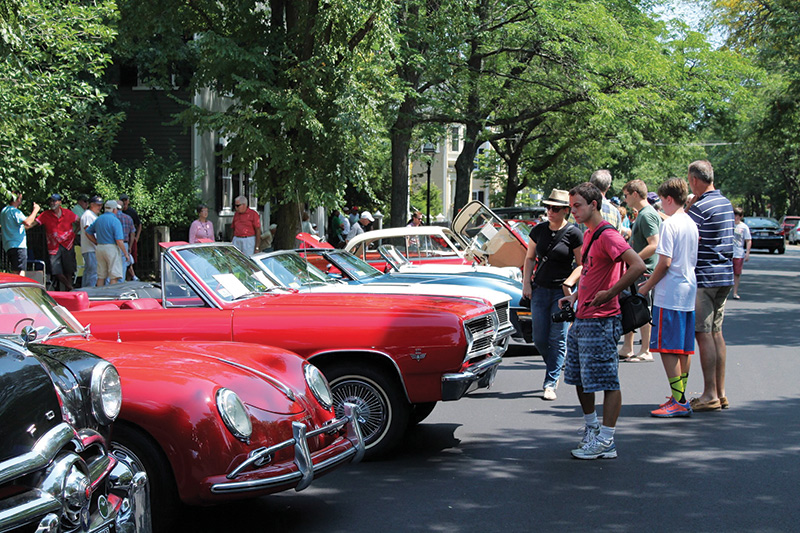
Melinda L. Huff, museum operations manager at the Steven Phillips House, shared her home’s family secrets. “In 1800, Captain Nathaniel West and his wife, Elizabeth, hired Samuel McIntire to build a grand country estate for them in South Danvers, Massachusetts, approximately four miles from Salem today. Elizabeth was the daughter of Elias Haskett Derby, America’s first millionaire. Unhappy in her marriage to the philandering Captain West, Elizabeth capitalized on a change to the Massachusetts divorce law in 1806. Up until that time, women could lose most of their own land and their own money in a divorce. But the change in the law required that the wife prove adultery—and Elizabeth pulled out all the stops in the courtroom—parading stories of prostitutes and children born out of wedlock. The West marriage ended in a bitter and public divorce.
"Determined that her ex-husband should never get his hands on the house, Elizabeth left it to their three daughters. Alas, after Elizabeth died in 1814 and the youngest daughter Sarah died unmarried and childless in 1819, Captain West inherited one third of the estate, which equaled four rooms of the house. In 1820 he had those rooms removed from the Danvers house and moved to Salem, using teams of oxen and logs. These rooms make up the front four rooms of the present house."
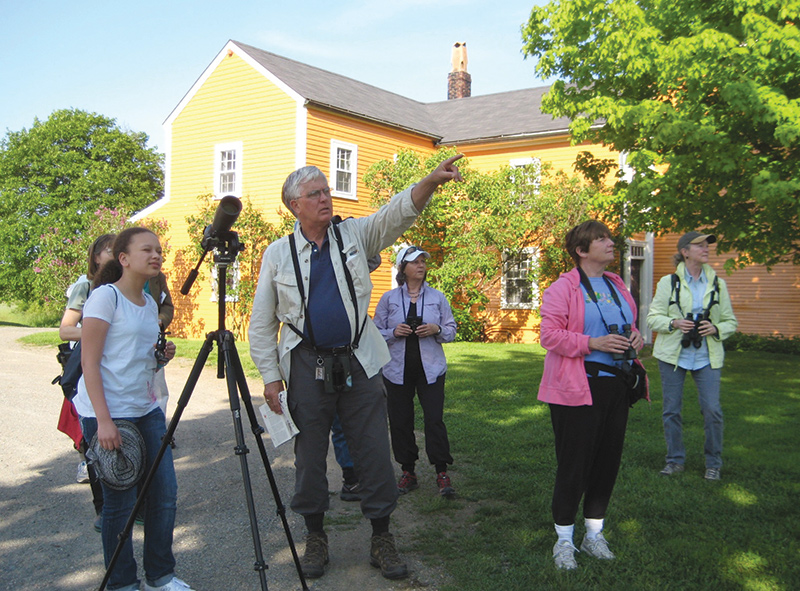
Huff explains that Phillips House has recently reinstalled its third-floor service wing and carriage house to tell the story of domestic service and Irish immigration more completely in Salem, Massachusetts. Five domestic staff assisted the Phillips family with the running of the house. Three live-in servants, including a cook Bridget Durgin, first-floor maid Delia Cawley, and nursemaid Catherine Shaunessy, were Irish-born single women who had separate bedrooms in the back wing of the third floor. Two male staff, coachman/grounds man Cornelius “Con” Flynn and chauffeur Patrick O’Hara, were needed for the horse-drawn carriages and the automobiles owned by the family. The men did not live on the property but went home at night to be with their families. A selection of carriages used by the Phillips family and three of the automobiles used during this time are on view today in the carriage house. Each, year Phillips House hosts a vintage car show the second Sunday in August with the beautiful homes on Chestnut Street providing the backdrop.
Overlooking the Essex River is another beautiful HNE property, the 165-acre Cogswell’s Grant in Essex. A summer home to renowned collectors Bertram K. and Nina Fletcher Little, Cogswell’s Grant is a must-see museum of American Folk Art meticulously curated over 60 years. Site manager Kristen Weiss is excited about a new annual event—the Essex Vintage Fair at Cogswell’s Grant, taking place on Saturday, October 9. “We hope to host 75 vendors for a flea market/antiques/vintage goods event. It is a great way to showcase our 165-acre landscape in the region’s antiques capital,” she says.
Bethany Dorau put it so beautifully: “When I’m having a hard time in my life, I gravitate toward old places because you’re reminded that you’re just a pebble in the stream, part of the flow. There’s a feeling about a place that has been there for 300 years. It helps you realize; this too shall pass.” So, visit the animals on the farm. Take in the beauty and scents of the gardens. Breathe in the salt air at the ocean. Let your mind wander to one of those fabulous dinner parties long ago, in a time where the flu pandemic slowed people down just as we all have for the past year, with a new appreciation for time spent with family and friends among the beauty of nature.
For more information, visit historicnewengland.org.

